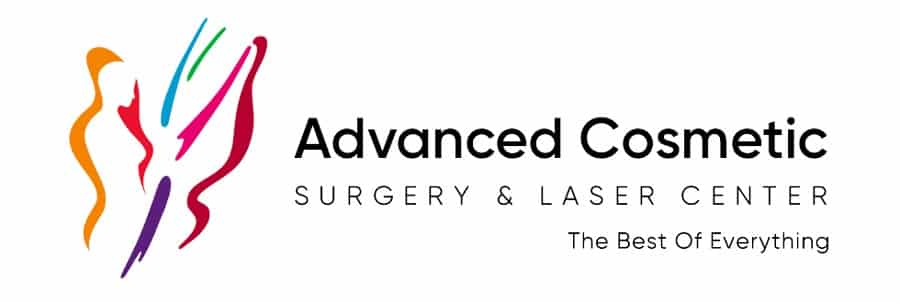Live Surgery Lower Blepharoplasty (Eyelid) by Dr. Jon Mendelsohn CAUTION
Caution! Live Surgery Dr. Jon Mendelsohn back to review the surgical lower eyelid blepharoplasty today. This is a procedure we used to perform all the time to rejuvenate the lower eyelid region but it’s important to understand that lower blepharoplasty is a procedure best reserved for patients who have bags or extra skin beneath their eyes. In other videos we’ll talk about the other non-surgical ways to rejuvenate the lower eyelid. What we’re demonstrating here is what were you referred to as a transconjunctival lower lid blepharoplasty. Very simply this means that we make an incision on the backside of the eyelid or the inside area here. This procedure is performed under local anesthesia although we’ll provide some oral sedation generally Valium so that you’re relaxed. So once you’re ready to go the lower eyelid is retracted and we use this little handheld instrument to make an incision in the conjunctiva. It’s a lining of the eyelid. Next we place this there’s a retraction suture. It’s a silk suture to hold back the conjunctiva to protect the eye and to give us some some retraction. So once we do this we will then retract the lower eyelid tissue and use a q tip to dissect this region exposing what we call the orbital septum. So very simply this is the partition between the orbital contents in this case the fat, a,nd this is what’s creating the bags that we’re treating. And the other soft tissues of the eyelid. So this is a very meticulous dissection. We take our time. We don’t want any bleeding as this can distort the normal anatomy. And also it’s just not good technique to have bleeding especially around the orbit around the eye like this. So slowly we go. And if there’s any bleeding we simply cauterize it.
We also cauterize any tiny blood vessels that look like they might bleed. So if they’re in the way then we will go ahead and simply cauterize them. So with a bright headlight I’m wearing it does make it difficult here for you to see the whitish appearance of the orbital septum is just tissue that’s holding back the fat. But once we identify it with this q tip dissection what we’ll do is we’ll simply palpate, that is pressing gently on the globe on the eye itself and you can see the fat pushing against that orbital septum Itself. Is the orbital septum again and you’re going to see it you’re going to see the fat pop right up The tiny incision then releases the fat and we kind of tease it we’ve gently kind of tease it out. For us in the operating room this can be very exciting it’s sort of like delivering a baby everybody runs around and there’s always more fat in this area than you might think It pops right up And we inject a little more local into the area and the local it’s already numb. But the local also contains epinephrine which prevents any bleeding so we’ll do that very meticulously. And back and forth we’ll CAUTERIZE IT WE’LL gently excise it and we’ll remove the fatty tissue.
Now unlike the upper eyelid region the lower eyelid area contains three fat compartments. Mostly however we are addressing the fullness or the bags in the medial fat pockets so that’s the first one that we’re dissecting here and removing. And that’s right in the center. And then the temporal fat pocket is positioned a little more higher or what we call more superior. And as the name describes it’s more lateral it’s more towards the outside portion of the eye. So a lot of times you know if you look up if you can look at the mirror and look up or if you’re looking at somebody have them look up the fact that you’re rolling your eyeballs up pushes that fat forward into the orbital septum and you can see those two distinct pockets. Now sometimes you don’t need to do that because that’s the problem is it’s always there it’s always pseudo-herniating it’s always sitting against the septum and that’s why we might recommend lower blepharoplasty
Benefits of Eyelid Surgery
Eyelid surgery may become necessary when various factors, which include aging, smoking, sun damage, and obesity, cause the muscles and tissue that support the eyelids to weaken.
A blepharoplasty is ideal for correction of the following:
- Loose, sagging and/or folded upper eyelids that may interfere with vision
- Puffy fat deposits in the eyelids
- Under-eye bags
- Sagging lower eyelids that may show the whites of the eyes below the irises
- Excess skin in the lower eyelids
- Fine wrinkles in the lower eyelids
Cosmetic Eyelid Surgery (Blepharoplasty)
An Eyelid Lift is typically performed as an outpatient procedure requiring local anesthesia and sedation. Patients can choose to have this procedure on their upper or lower eyelids or both. The procedure can take anywhere from 20 minutes to 1.5 hours, depending on whether both the upper and lower eyelids are operated on.
Lower Eyelid Blepharoplasty
Lower eyelid surgery can address:
- Loose, excess skin that droops or sags below the eyes
- Fine wrinkles below the eyes
- Under-eye puffiness
The incision for lower eyelid blepharoplasty is made just below the lash line so that excess skin can be removed.
What To Expect After Lower Eyelid Blepharoplasty
Lower eyelid surgery is usually an outpatient procedure, unless you’re having other procedures performed too.
Your doctor will give you instructions for care following surgery. This usually includes applying cold compresses for about 48 hours after surgery to help reduce swelling.
Your doctor will also prescribe ointments and eye drops, to help prevent infections. You can expect some bruising, dry eyes, swelling, and overall discomfort in the days after your surgery.
You’ll usually be asked to limit strenuous exercise for at least one week. You should also wear darkly tinted sunglasses to protect your eyes as the skin heals. If your surgeon placed sutures the body doesn’t absorb, the doctor will usually remove them about five to seven days after surgery.
Most people find the swelling and bruising has decreased significantly after about 10 to 14 days, and they feel more comfortable in public.
You should always call your doctor if you have symptoms that may mean you have post surgery problems.
Lower Eyelid Surgery can give a more youthful and tighter appearance to the skin under the eyes. Follow instructions give to you during the recovery period for optimal results!
Related Webpages: https://351face.com YouTube channel: https://www.youtube.com/channel/UC2EA… Vimeo Link: https://vimeo.com/455900946 Youtube Link: https://youtu.be/6qFU_ajssgM Youtube Playlist Link: https://www.youtube.com/playlist?list… https://www.youtube.com/playlist?list… https://www.youtube.com/playlist?list…
Related Webpages: https://351face.com
YouTube channel: https://www.youtube.com/channel/UC2EA… Vimeo Link: https://vimeo.com/455900946 Youtube Link: https://youtu.be/6qFU_ajssgM Youtube Playlist Link: https://www.youtube.com/playlist?list… https://www.youtube.com/playlist?list… https://www.youtube.com/playlist?list…
https://www.youtube.com/playlist?list…
Related Webpages: https://351face.com YouTube channel:https://www.youtube.com/user/drjonmendelsohn/videos https://www.youtube.com/channel/UC2EA…
Ready to Take the Next Steps to a Younger Looking You?
Schedule Your Free In-Person Consultation

Lorem ipsum dolor sit amet, consectetur adipiscing elit, sed do eiusmod tempor incididunt ut labore et dolore.
Consectetur adipiscing elit, sed do eiusmod tempor.
Let’s Start Your Virtual Consultation
Contact us through the form below and include an optional photo of the area you’re looking to address, and we’ll get back in touch with you shortly.

